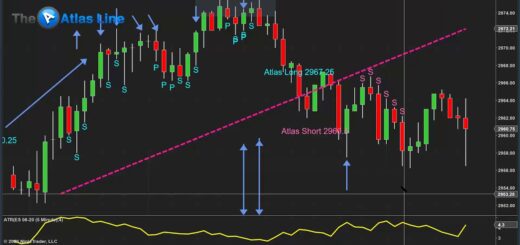Improve Your Trading – Target & Stop Strategy
Successful day trading is all about making the correct decision at the right time. All it takes is too big or too low a value, sometimes just a tick, to throw off a trade and cause a loss. Rather than guessing these values, it is best to keep a consistent and flexible strategy. Otherwise, if you are random with guessing a value to use, how are you ever going to get an understanding of what works? You’ll be experimenting with random date. That’s a sure way for no progress To go a step further, one can argue that it is better to stick with a losing, but consistent approach with objective rules because at least you will be learning something on a consistent foundation. Of course, losing money is to be avoided as much as possible. This simply describes an aspect of the learning process.
Watching this new video, you’ll see a great Long 3818 signal from the Trade Scalper software from DayTradeToWin. Scalping goes for small amounts many times per day with a quick in and out for each trade. The ATR (Average True Range) is used with a period value of four to determine the profit target and stop loss for each trade. This ensures only the last four bars are used in the calculation rather than the default value of 14 in NinjaTrader’s ATR indicator.
In effect, you have a more recent sense of what the market can reasonably “do” in the moment if the last 20 or so minutes are considered (i.e. last four bars on a 5-Minute chart). In contrast, John Paul believes the default 14 value is far too great a duration for real-time applicability for guiding the profit target and stop loss. Note that on a 1-Minute chart, an ATR value of four would simply be four minutes, as each of the last four bars represents a minute of price moment. For some price action methods, when the ATR exceeds five points, it may be high time to switch to a 1-Minute chart, where the signals will likely still work and the profit and stop loss more reasonable for the average trader.
John Paul shares a solid piece of advice, here. Use as much time as you need to simulate trading in a real-time environment. Use NinjaTrader’s Market Replay if you need to. Really get a sense of how the methods work in real-time. Observing historical price action with signals is good, but you need to see how and when those signals appear in relation to the candle and the sequence of action to be taken thereafter: trade placement and management, mainly. Once you see success per the trade performance reports, consider trading the Micro E-mini first. This way, the same price action of the regular E-mini is present, though the financial consequence is lessened. The Micros are less expensive to trade. You see, when real money is in play, some traders really struggle with the psychology of it all. This is why the more affordable Micros offer a set of training wheels before removing them and pedaling full force in the regular index futures with the rest of the trading world.




